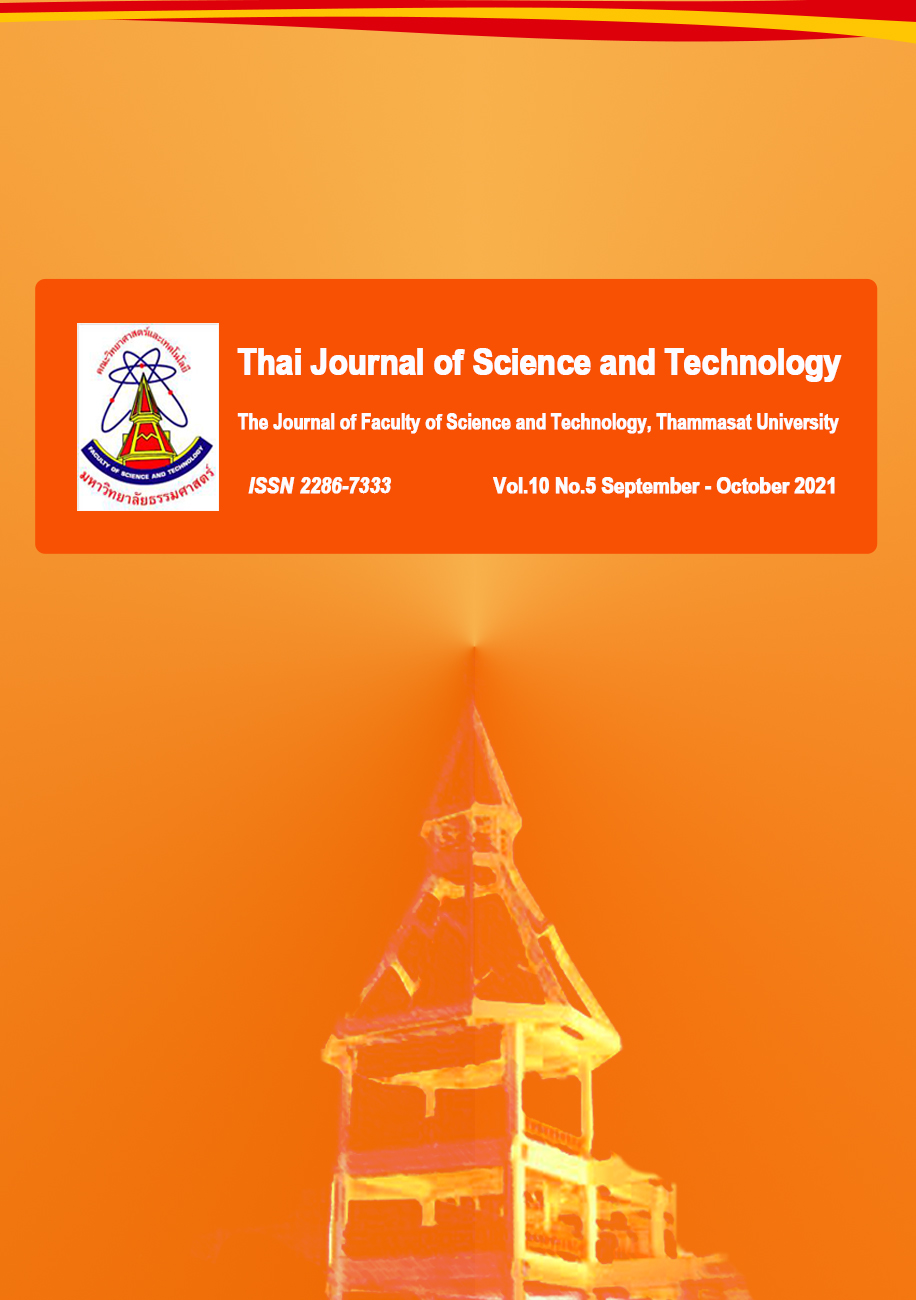Analytical Performance Evaluation of theMaccura IS 1200Clinical Chemistry Analyzer forHormones and Tumor Markers
Main Article Content
Abstract
Currently, the automation system for laboratory has developed a new technology used to make a short turnaround time and quick whether it is a diagnosis or follow up with a doctor's treatment. Therefore, the results of the examination should be accurate and reliable. The purpose of this study was to assess the diagnostic efficacy of Maccura IS 1200 based on Magnetic Microparticles Enhanced Immunochemiluminescence in the determination of thyroid hormone and tumor markers. The assessment consisted of testing precision, accuracy comparing with the Architect i2000 SR , recovery test and linearity according to the requirements of CLSI EP5-A2 using a method validation. For a method validation result, the Maccura IS 1200 were presented a good reliability within the specified range. The quality control materials with low and high concentrations had within-day imprecision (% CVwd) value of 0.25 and between-day imprecision (%CVbd) of 0.33. Quality control substances both low and high concentrations had within-day imprecision (% CVwd) 1.25-7.49 % and between-day imprecision (% CVbd) 1.96–22.92 %. The measurement error was within the acceptable range. Comparative measurements with reference instruments, including the Architect i2000 SR, showed that the regression curve shows the slope between 0.886 – 6.371, the correlation coefficient (r) is between 0.891-1.00, and the correlation coefficient (r) is between 0.107 – 0.996. The recovery in the range of 80-120 % (min. 73 %, max. 163 %). Measurement values were in the range specified by the manufacturer. The results of this study show that the Maccura IS 1200 analyzer can measure thyroid hormone levels. and cancer markers in the range of acceptable according to the criteria set by the standard organization and further testing should be done before it is put into practice in the laboratory.
Article Details

This work is licensed under a Creative Commons Attribution-NonCommercial-NoDerivatives 4.0 International License.
บทความที่ได้รับการตีพิมพ์เป็นลิขสิทธิ์ของคณะวิทยาศาสตร์และเทคโนโลยี มหาวิทยาลัยธรรมศาสตร์ ข้อความที่ปรากฏในแต่ละเรื่องของวารสารเล่มนี้เป็นเพียงความเห็นส่วนตัวของผู้เขียน ไม่มีความเกี่ยวข้องกับคณะวิทยาศาสตร์และเทคโนโลยี หรือคณาจารย์ท่านอื่นในมหาวิทยาลัยธรรมศาสตร์ ผู้เขียนต้องยืนยันว่าความรับผิดชอบต่อทุกข้อความที่นำเสนอไว้ในบทความของตน หากมีข้อผิดพลาดหรือความไม่ถูกต้องใด ๆ
References
Kijburana, K. (2013). Quality Control Planning for Assessment of Clinical Chemistry Laboratory Performance, Medical Technology Department, Sawanpracharak Hospital. Journal of the Medical Technologist Association of Thailand, 41(2).
Taneyhill, K., Thanoosa, P., Kittikunnathum, S., Udomsom, S., Inay, N., & Seema, N. (2015). Analytical performance evaluation of the Biosystems BA400 Clinical Chemistry Analyzer. The Bulletin of Chiang Mai Associated Medical Sciences, 48(1), 34.
Westgard, J. O. (2010). Managing quality vs. measuring uncertainty in the medical laboratory. Clinical Chemistry and Laboratory Medicine, 48(1), 31-40.
Wisut Kungwantrakul. (2554). Analytical Method Evaluation. Clinical Chemistry Teaching Papers, Medical Technology, Khon Kaen University, 1-24.
Chen, L., & Chen, Y. (2015). Performance Evaluation of the Sysmex CS-5100 Automated Coagulation Analyzer. Clinical Laboratory, 61(7), 653-660.
Van Gammeren, A. J., van Gool, N., de Groot, M. J., & Cobbaert, C. M. (2008). Analytical performance evaluation of the Cobas 6000 analyzer – special emphasis on trueness verification. Clinical Chemistry and Laboratory Medicine, 46(6), 863-871.
Desmet, S., De Puydt, H., Louagie, H., Van Acker, J., Coorevits, L., & Ghys, T. (2013). Evaluation of the Roche Cobas 6000 analyzer: comparison with the Vitros 5.1. FS (Ortho Clinical Diagnostics) and Unicel Dxi 600 (Beckman Coulter). Acta Clinica Belgica, 69, 12-12.
Glibert, B., Bourleaux, V., Peeters, R., Reynolds, T., & Vranken, G. (2016). Analytical Performance Verification of the Beckman Coulter AU5800 Clinical Chemistry Analyzer Against Recognized Quality Specifications Reveals Relevance of Method Harmonization. Clinical Laboratory, 62(1-2), 57-72.


